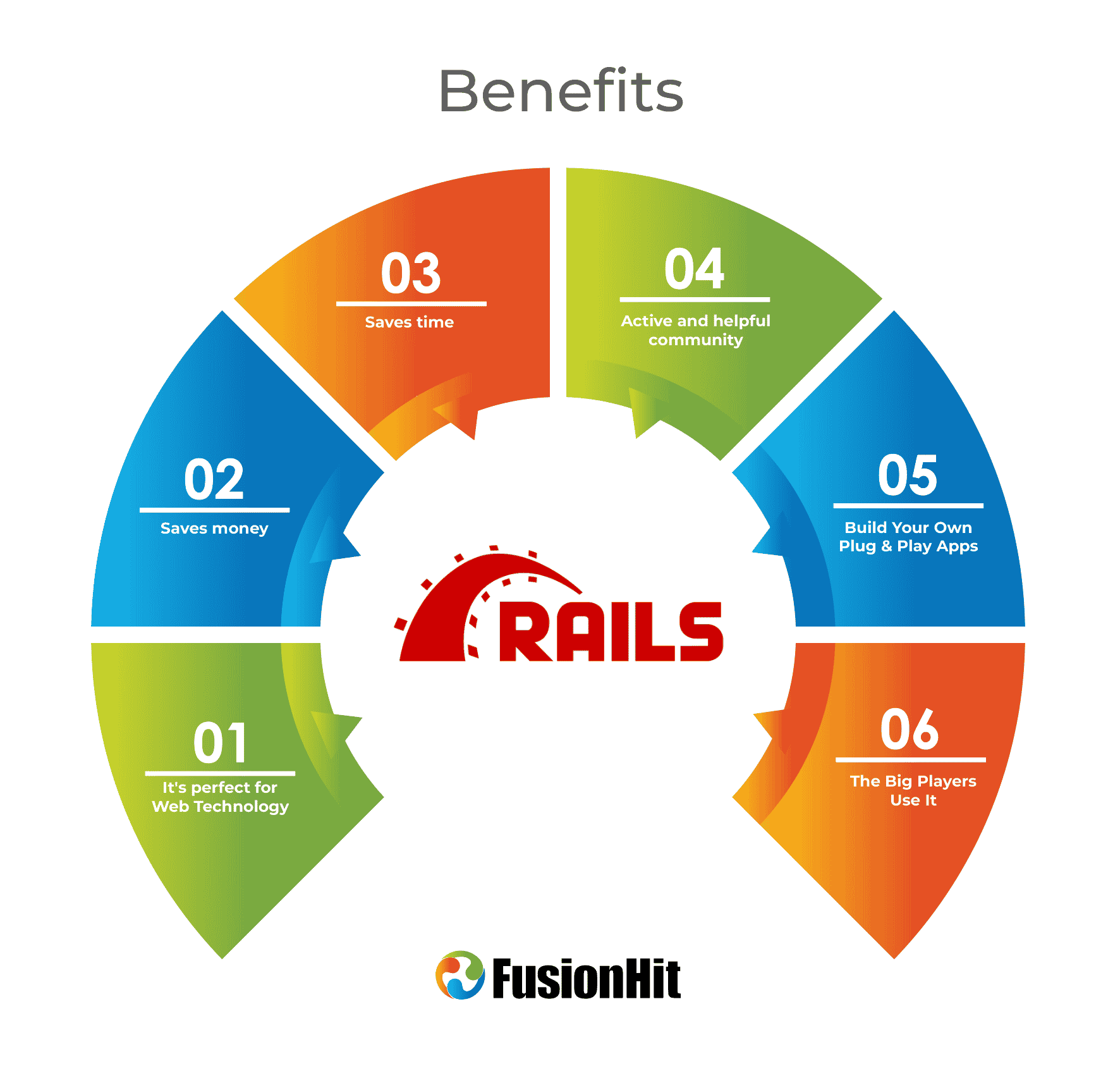What is Ruby on Rails?
Ruby on Rails is a combination of the Rails framework and the Ruby language and together they make up one of the world’s most popular server-side web application frameworks. The Ruby language was created in 1995 and Rails was released in 2004. Rails follows the MVC (Model-View-Controller) pattern which is a very accessible way of maintaining code and indeed Ruby on Rails is often regarded as simple-to-use.
Benefits
As with other major web applications that FusionHit favour for web development, Ruby on Rails benefits our clients’ projects through its large community of developers. This community supplies a real-time resource of dedicated Rails fans, always testing the limits of this framework. As it is open-source, Ruby is a language that has a low entry-level.

Features
Ruby is packed with features that make it a joy to work with. Ruby is object-orientated, and so views everything as an object including a string or a class.
The longevity and popularity of Ruby on Rails is down to several factors. Here at FusionHit, our RoR team members particularly like the simplicity and clarity of the language and its great flexibility. Ruby’s flexible approach to language allows for the code to look very readable and understandable; it is often said that the code almost reads like English in places and we can agree to that.
Similarly, Ruby takes a flexible approach to the use of expressions (which are known, here, as methods) and exception handling. Exceptions (errors) are addressed through a variety of blocks (such as ‘raise’ and ‘retry’ statements) which attempt to handle errors that have occurred.
Beyond the simplicity, Ruby has some clever ways to introduce more complexity when needed. For example, while the language supports single class inheritance, it does allow for the use of mixins that can introduce other parent classes without the need of inheritance.
Finally, Ruby on Rails supports test-driven development (TDD) which allows the FusionHit engineers to test early, as we write the code. TDD is a solid, reliable programming practice that keeps the development moving forwards, and error-free.
Outsourcing Ruby on Rails Development for Your Next Web App Project
If your in-house web development team does not have a strong background in Ruby on Rails, it makes perfect sense to outsource your next web app to FusionHit. In doing so you can take advantage of a high level of specialisation in web app development without the high costs of taking on Ruby on Rails developers in-house. And your app will be written in one of the world’s most reliable, secure and scalable frameworks, joining the likes of Twitter, Shopify and Hulu.